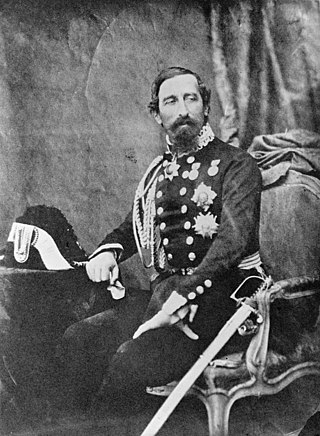
Alfonso Ferrero La Marmora was an Italian general and statesman. His older brothers include soldier and naturalist Alberto della Marmora and Alessandro Ferrero La Marmora, founder of the branch of the Italian army now called the Bersaglieri.
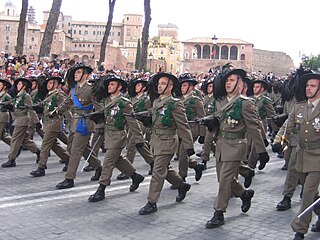
The Bersaglieri, singular Bersagliere, are a troop of marksmen in the Italian Army's infantry corps. They were originally created by General Alessandro Ferrero La Marmora on 18 June 1836 to serve in the Royal Sardinian Army, which later became the Royal Italian Army. They can be recognized by their distinctive wide-brimmed hats decorated with black western capercaillie feathers, which is worn with the dress uniform. The feathers are also applied to their combat helmets.

Turco-Egyptian Sudan, also known as Turkiyya or Turkish Sudan, describes the rule of the Eyalet and later Khedivate of Egypt over what is now Sudan and South Sudan. It lasted from 1820, when Muhammad Ali Pasha started his conquest of Sudan, to the fall of Khartoum in 1885 to Muhammad Ahmad, the self-proclaimed Mahdi.

Rosignano Monferrato is a comune (municipality) in the Province of Alessandria in the Italian region Piedmont, located about 60 kilometres (37 mi) east of Turin and about 25 kilometres (16 mi) northwest of Alessandria. As of 31 December 2004, it had a population of 1,659 and an area of 19.2 square kilometres (7.4 sq mi).

African emigrants to Italy include Italian citizens and residents originally from Africa. Immigrants from Africa officially residing in Italy in 2015 numbered about 1,000,000 residents. Afro-Italians (Afroitaliani) are Italians born and are raised in Italy, citizen of African descent or of mixed African and Italian roots.
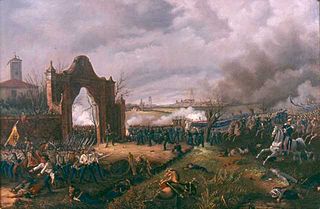
The First Italian War of Independence, part of the Italian Unification (Risorgimento), was fought by the Kingdom of Sardinia (Piedmont) and Italian volunteers against the Austrian Empire and other conservative states from 23 March 1848 to 22 August 1849 in the Italian Peninsula.

Emilio Dandolo was an important figure in the Italian Risorgimento, participating in several of its most important battles.

Gaetano Giardino was an Italian soldier that rose to the rank of Marshal of Italy and Italian Representative to the Allied War Council during World War I.

The Republic of San Marco or the Venetian Republic was an Italian revolutionary state which existed for 17 months in 1848–1849. Based on the Venetian Lagoon, it extended into most of Venetia, or the Terraferma territory of the Republic of Venice, suppressed 51 years earlier in the French Revolutionary Wars. After declaring independence from the Habsburg Austrian Empire, the republic later joined the Kingdom of Sardinia in an attempt, led by the latter, to unite northern Italy against foreign domination. But the First Italian War of Independence ended in the defeat of Sardinia, and Austrian forces reconquered the Republic of San Marco on 28 August 1849 following a long siege.
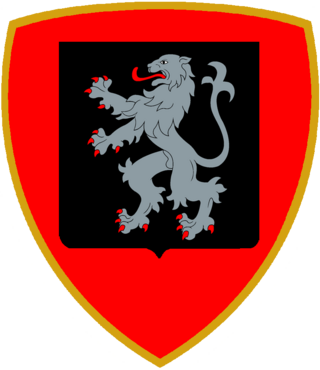
The Mechanized Brigade "Aosta" is a mechanized infantry brigade of the Italian Army based on the island of Sicily. The Brigade is one of the oldest of the Italian Army and the name connects the brigade to its original area of recruitment the Aosta Valley and therefore the brigade's coat of arms is modeled after the coat of arms of Aosta. The brigade is part of the Division "Acqui".

Giorgio Cigilana (1857-1919) was an Italian general. He had been the governor of Tripolitania for a short time in 1914.
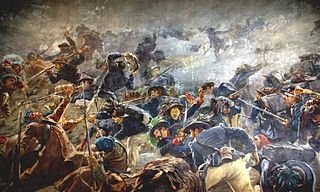
The Kingdom of Sardinia sided with France, Britain and the Ottoman Empire against Russia during the Crimean War and sent an expeditionary force to the Crimea in 1855.

The 11th Bersaglieri Regiment is an active unit of the Italian Army based in Orcenico Superiore in the Friuli-Venezia Giulia region. The regiment is part of the army's infantry corps' Bersaglieri speciality and operationally assigned to the 132nd Armored Brigade "Ariete". The regiment was formed in 1883 by the Royal Italian Army with preexisting battalions. The regiment served in Libya during the Italo-Turkish War, where it earned a Gold Medal of Military Valor. During World War I the regiment served on the Italian front.

The 1st Bersaglieri Regiment is an active unit of the Italian Army based in Cosenza in the Calabria region. The regiment is part of the Italian infantry corps' Bersaglieri speciality and operationally assigned to the Bersaglieri Brigade "Garibaldi". The regiment is the most often decorated unit of the Italian Army with 14 medals for military valor. The regiment was formed in 1861 by the Royal Italian Army with preexisting battalions. During World War I the regiment's battalions served initially in Libya and then on the Italian front.

The 8th Bersaglieri Regiment is an active unit of the Italian Army based in Caserta in Campania. The regiment is part of the army's infantry corps' Bersaglieri speciality and operationally assigned to the Bersaglieri Brigade "Garibaldi". The regiment was formed in 1871 by the Royal Italian Army with preexisting battalions, which had served in the First Italian War of Independence, Crimean War, Second Italian War of Independence, and Third Italian War of Independence. During the Italo-Turkish War the regiment fought against Ottoman Army forces in Libya. During World War I the regiment served on the Italian front. During World War II the regiment was initially assigned to the 132nd Armored Division "Ariete", with which it fought in the Western Desert Campaign, and then to the 136th Armored Division "Giovani Fascisti", with which if fought in the Tunisian Campaign. For its service and sacrifice in the two North African campaigns the regiment was awarded two Gold Medals of Military Valor.

The 12th Bersaglieri Regiment is an inactive unit of the Italian Army last based in Trapani in Sicily. The regiment is part of the Italian Army's infantry corps' Bersaglieri speciality and was last operationally assigned to the Mechanized Brigade "Aosta". The regiment was formed in 1883 by the Royal Italian Army with preexisting battalions. During World War I the regiment served on the Italian front. After the war the regiment was disbanded for short time, before it was reformed in August 1919.

The 2nd Bersaglieri Regiment is an inactive unit of the Italian Army last based in Legnano in Lombardy. The regiment is part of the army's infantry corps' Bersaglieri speciality and was last operationally assigned to the Armored Brigade "Centauro". The regiment was formed in 1861 by the Royal Italian Army with preexisting battalions. During World War I the regiment served on the Italian front.
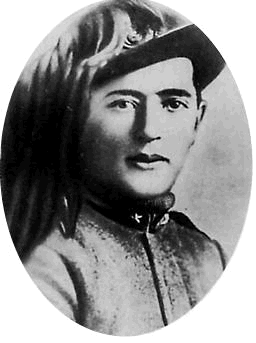
Francesco Rismondo was an Austrian-born Italian irredentist and decorated military volunteer.

Gustavo Fara was an Italian general and politician.
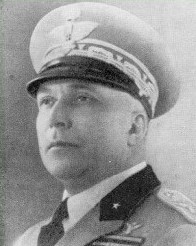
Umberto di Giorgio was an Italian general during World War II, in charge of the territorial defense of Rome from 1939 till September 1943.




















